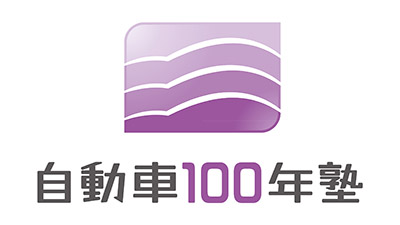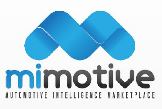
The U.S. has long wanted to sell more cars in Asia. Do Asian consumers want them?
Despite Trump’s accusations of unfairness, Japan has in fact kept tariffs on American cars at zero since 1978 in contrast to the U.S.’ 2.5%, and now, 25%. But several nontariff trade barriers exist, such as different electric-vehicle charging standards that in effect disadvantage American cars, or a requirement that all cars be equipped with an automatic emergency braking system.
Experts say the deeper issue is that Japanese consumer tastes, which have long favored compact cars suited for denser urban environments, are poorly reflected in American automakers’ bulkier product lines.
“Many people say that [American cars] don’t fit in parking lots or ‘are difficult to handle on narrow roads,’” said Felipe Munoz, an analyst at automotive research firm JATO Dynamics. “American cars are often perceived as ‘hobby cars’ or ‘cars for a niche audience.’”
In order to register new vehicles, Japanese drivers are required to obtain verification that they have access to an adequate parking space from the police. But with spaces much smaller compared with those in the U.S., about 40% of the Japanese automobile market is held by the kei car, a type of minicar unique to the country that the Japanese government has also promoted with tax benefits.
This, along with strong brand loyalty for domestic players, has led to foreign cars making up less than 10% of the Japanese auto market, with German manufacturers taking the lion’s share of that slice. Last year, only 0.3% — or around 16,000 — of all car sales were from American brands, according to the Japan Automobile Importers Assn.
Ultimately, the biggest source of U.S. automakers’ woes in Japan, according to Takeshi Miyao, a Tokyo-based auto analyst, is failing to adapt to local consumers.
Although European automakers such as Mercedes, for example, have been proactive in making adjustments like offering their cars in right-hand drive — the standard in Japan — American competitors have historically been reluctant to do so.
“The infrastructure in Japan cannot be adjusted,” Miyao said. “U.S. carmakers do not have the car variations suited to the Japanese market, and they haven’t put much effort into marketing. On the other hand, German carmakers put in very hard work into the Japanese market. For example, Mercedes-Benz Japan was planning a car that would sell in the Japanese market in more than 15 years.”
“Even if all the nontariff barriers to foreign automobiles in Japan were abolished, U.S. cars still wouldn’t be popular,” he added.
翻訳
トランプ大統領が不公平だと非難するにもかかわらず、日本は1978年以降、米国車への関税をゼロに維持している。これは米国の2.5%、そして現在では25%である。しかし、電気自動車の充電基準の違いなど、事実上米国車に不利な点がある、あるいはすべての自動車に自動緊急ブレーキシステムの搭載を義務付けるなど、非関税貿易障壁もいくつか存在する。
専門家らは、より深刻な問題は、長年、人口密度の高い都市環境に適した小型車を好んできた日本の消費者の嗜好が、米国の自動車メーカーの大型製品ラインにあまり反映されていないことだと指摘する。
「(アメリカ車は)駐車場に入らないとか、狭い道では扱いにくいとか言う人が多い」と、自動車調査会社JATOダイナミクスのアナリスト、フェリペ・ムニョス氏は語る。「アメリカ車は『趣味の車』や『ニッチな層向けの車』と思われがちだ」
日本では、新車を登録するために、適切な駐車スペースがあることを警察から証明してもらう必要がある。しかし、米国に比べて駐車スペースがはるかに狭いため、日本の自動車市場の約40%は軽自動車が占めている。軽自動車は日本独自の軽自動車であり、日本政府も税制優遇措置などで普及を促進している。
これに加え、国内メーカーへの強いブランドロイヤルティも相まって、日本の自動車市場における外国車の割合は10%未満にとどまり、その大部分はドイツメーカーが占めています。日本自動車輸入組合によると、昨年の販売台数全体のうち、アメリカブランドの車はわずか0.3%、つまり約1万6000台でした。
東京を拠点とする自動車アナリストの宮尾健氏によると、結局のところ、米国自動車メーカーが日本で苦境に陥る最大の原因は、現地の消費者のニーズに適応できていないことだという。
例えばメルセデスなどの欧州の自動車メーカーは、日本での標準である右ハンドル仕様の車を提供するなどの調整に積極的に取り組んでいるが、米国の競合他社は歴史的にそうすることに消極的だった。
「日本のインフラは調整できません」と宮尾氏は述べた。「アメリカの自動車メーカーは日本市場に適した車種を持っておらず、マーケティングにもあまり力を入れていません。一方、ドイツの自動車メーカーは日本市場に非常に力を入れています。例えば、メルセデス・ベンツ・ジャパンは、15年以上も日本市場で売れるクルマを企画していました。」
「たとえ日本における外国車に対する非関税障壁がすべて撤廃されたとしても、米国車は依然として人気が出ないだろう」と彼は付け加えた。
2025年7月18日 13:55 Los Angeles Timesより抜粋




